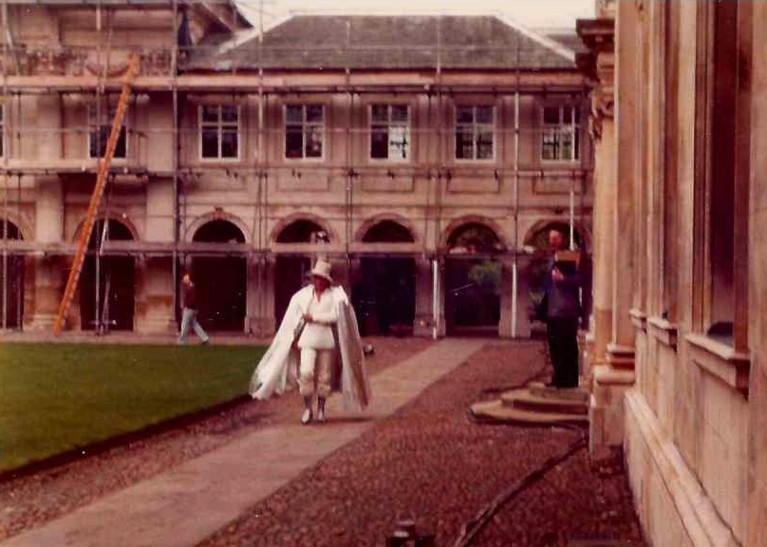Blog
26 June 2024
D is for … Doves
.jpg)
Our archives contain a series of title deeds recording the changes in ownership of the college site between 1545 (a few years after it had ceased to house the Dominican monastic order) and 1584, when Emmanuel College was founded. All these documents, in their recital of the premises’ appurtenances, include a reference to a dove-house. This building, of uncertain location, continued in use after 1584 as it served an important function: the provision of fresh meat throughout the year. The first reference to it in the college accounts is dated 1594, when 28s 7d was spent on ‘New tiling, lathing, and mending the duffhouse’. These renovations lasted a couple of decades, but thereafter the building required regular maintenance. In 1614 the college laid out 16s 10d on ‘Tyling, claying & mending the duvhouse’, and minor repairs were needed in 1621, 1628 and 1633. We know the building had fenestration, for in 1630 a shilling was spent on ‘2 new latices for the pigeon-house’ and in 1635 the ‘glasse’ had to be mended. Substantial improvements were required in 1636, when a builder named Rively and his labourer were paid 19s 6d for ‘9 dayes worke about the dovehouse’, and yet more repairs were carried out by the same builder two years later. There are no more references to the dovehouse until 1659, when unspecified ‘work’ was carried out. The building presumably fell out of use soon afterwards, as it is not mentioned again. In 1890 a dovecote was set up in Chapman’s Garden, which at that date was only accessible via the set of Arthur Chapman, Fellow of Emmanuel from 1862 until his death in 1913. Populated with white fantails, Chapman’s picturesque dovecote features in several late-Victorian and Edwardian photographs.
D is for … Dr Who

On Wednesday 17th October 1979, Emmanuel was briefly transmogrified into St Cedd’s College, Cambridge, an institution harbouring an incognito Time Lord named Professor Chronotis. This scenario sprang from the fertile imagination of the well-known sci-fi writer and Cambridge graduate Douglas Adams, who was at that time script editor for the Dr Who show. The 1979-80 college Magazine records, under Gifts and Bequests: ‘B.B.C. TV kindly donated £100 to the College following their successful filming of a Dr Who episode on College premises’. Unfortunately, no paperwork survives in the archives to indicate why, or how, Emmanuel was selected as a suitable location. The filming took place in Front and New Courts (exteriors only). The photograph reproduced above has been provided by Dr Alan Baker, Senior Tutor in 1979, who can be seen standing on the steps to C staircase. The Emmanuel students’ newsletter, under the headline ‘Dr Why?’, noted the ‘production of another epic Dr Who episode in the College grounds’, but queried why P3 had been selected as the Professor’s room, concluding: ‘Perhaps it was the rumour about frequent sightings of “alien” life forms and the strange knocking noises in the night’. Alas, many years were to pass before Emmanuel’s moment of glory was seen by the paying public, as a technicians’ strike prevented this particular Dr Who serial (‘Shada’), from being finished. Such footage as existed was eventually released on VHS, followed by, in 2017, a DVD version in which the missing sections had been completed using animation, dialogue being dubbed by the original cast. When the DVD was played to an audience in the Queen’s Building a few years ago, the advent of the ‘baddie’, clad in silver lamé and billowing white satin, provoked howls of laughter from undergraduates and nostalgic smiles from anyone ancient enough to remember the 1970s.
Amanda Goode, College Archivist
